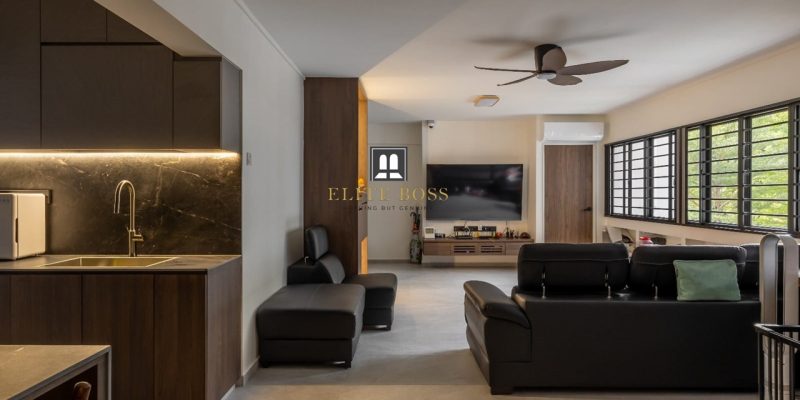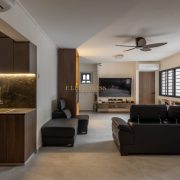The decision to undertake hdb renovation marks a significant milestone in any homeowner’s journey, one that requires not merely aesthetic vision but an understanding of regulatory frameworks, practical constraints, and the considerable investment of time and resources involved. In Singapore, where the Housing and Development Board governs the majority of residential properties, renovation is not simply a matter of personal preference but operates within a carefully structured system designed to maintain building integrity and communal harmony. The process, when properly understood and executed, transforms a standard flat into a personalised dwelling that reflects its occupants’ needs and aspirations.
The Regulatory Framework: Understanding Your Boundaries
Before a single wall is touched or a tile removed, the prospective renovator must navigate the HDB’s regulatory requirements. These are not arbitrary impositions but exist to preserve structural safety and prevent disputes between neighbours. The HDB stipulates that homeowners must engage registered contractors for any renovation work, a requirement that ensures a basic standard of competence and accountability.
Certain works require formal approval from the HDB. These include:
• Hacking of non-structural walls or partitions
• Installation of water heaters and water points
• Alteration of existing plumbing systems
• Addition of new electrical points beyond the original layout
• Any works affecting the external facade or common areas
The application process, conducted through the HDB’s online portal, typically requires seven working days for approval. This waiting period, though it may seem tedious, serves the essential function of allowing authorities to review plans for compliance with building codes and safety standards.
What Cannot Be Changed: The Immutable Elements
Understanding the boundaries of permissible HDB renovation work prevents costly mistakes and legal complications. Load-bearing walls, identifiable by their thickness and position, must never be demolished or altered. These structural elements support the building’s weight and their compromise could result in catastrophic consequences.
The HDB prohibits several modifications outright. Bomb shelter walls cannot be hacked or modified. Window frames and external facades remain untouchable. The original floor trap positions, installed according to the building’s drainage system, cannot be relocated. Ceiling heights have maximum limits to ensure adequate plenum space for building services.
These restrictions, whilst limiting, reflect decades of accumulated knowledge about building safety and maintenance. They represent the collective experience of housing hundreds of thousands of families in vertical communities.
The Timeline: A Study in Patience
A typical hdb renovation spans two to three months, though complex projects may extend beyond this timeframe. This duration reflects not merely the physical work required but the coordination of multiple trades, the procurement of materials, and the inevitable delays that accompany any construction activity.
The process unfolds in predictable stages. Hacking and demolition commence first, a destructive phase that paradoxically creates possibility. Reconstruction follows, with masonry, carpentry, and plumbing progressing in sequence. Electrical works, painting, and final installations complete the transformation.
Working hours for renovation are strictly regulated. The HDB permits noisy work only on weekdays between 9am and 6pm, and on Saturdays until 1pm. Sundays and public holidays remain silent, a concession to neighbours who share walls and floors with the renovation site. Violations invite fines and can result in work stoppages.
Budget Considerations and Hidden Costs
The financial aspect of flat renovation demands realistic assessment. A basic renovation of a four-room flat typically ranges from thirty thousand to fifty thousand dollars, whilst more extensive works can exceed this substantially. These figures fluctuate with material choices, design complexity, and the extent of hacking required.
Hidden costs inevitably emerge during renovation:
• Additional hacking when unforeseen issues are discovered
• Upgrading of old electrical wiring or plumbing systems
• Rectification works for problems revealed during demolition
• Storage costs for furniture during the renovation period
• Temporary accommodation if the flat proves uninhabitable during works
A contingency fund representing ten to fifteen percent of the total budget provides cushioning against these unexpected expenses. Experience suggests that renovations rarely come in under budget but frequently exceed initial estimates.
Design Choices and Practical Realities
The aesthetic decisions in hdb renovation must reconcile aspiration with practicality. Open-concept layouts create spaciousness but sacrifice privacy and sound insulation. Built-in carpentry maximises storage but represents a permanent installation that cannot relocate if you move. Material selections balance appearance against durability and maintenance requirements.
Contemporary trends favour minimalist designs, neutral colour palettes, and multi-functional spaces. Yet trends pass whilst your renovation endures. The wisest approach selects timeless elements that age gracefully rather than fashionable features that date quickly.
The Administrative Trail
Documentation accompanies every stage of renovation. Contracts with contractors should specify scope, timeline, payment schedules, and warranty terms. Receipts and invoices create an audit trail. Photographs before, during, and after renovation provide evidence of the work completed and protect against future disputes.
Upon completion, an inspection may be conducted to ensure compliance with approved plans. This final verification closes the loop, confirming that the executed works match the approved submissions.
The Larger Picture
The experience of renovation teaches lessons beyond interior design. It reveals the complexities of urban housing management, the balance between individual freedom and collective welfare, and the importance of planning and patience. The finished product, your renovated home, stands as testament to these navigated challenges.
The journey through hdb renovation ultimately transforms not just physical space but one’s understanding of what home ownership entails in Singapore’s unique housing landscape.





Comments